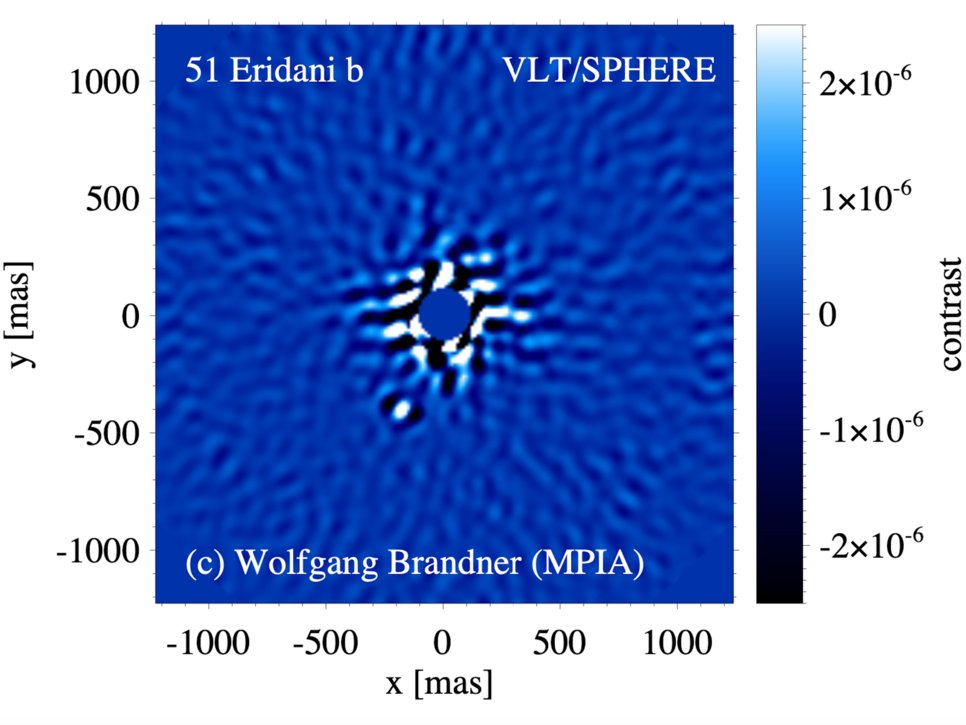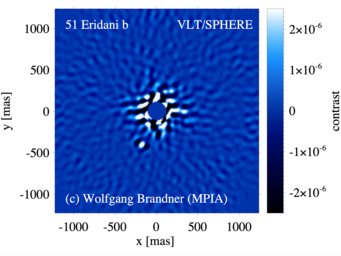Observations of Directly Imaged Exoplanets

Direct imaging of exoplanets combines the challenges of high contrast and high angular resolution observations. The host sample of directly imaged exoplanets favours young and nearby stars.
Tracing back to their formation process, young exoplanets are still warm, which makes them self-luminous in the infrared. This alleviates the planet-to-star contrast challenge compared to older (and cooler) planets only detectable in reflected light from their host star.
At orbital separations of 10 to a few 100 astronomical units, the energy budget of the atmospheres of young directly imaged exoplanets is dominated by the internal entropy rather than – as it is the case for closer-in exoplanets – by radiative forcing by the host star.
Research topics addressed by APEx scientists include:
Planet formation: do hot, warm, or cold start formation models best agree with the observed cooling ages of planets?
Is the atmospheric composition in agreement with equilibrium chemistry? Are there indications for a temperature inversion in the vertical pressure-temperature profile of exoplanet atmospheres?
What is the cloud coverage and composition? Is there evidence for weather and rotational modulation as the planet revolves around it axis?
What are the orbital parameters and masses of exoplanets as derived from multi-epoch astrometric monitoring?
Formation and dynamical evolution of planetary systems: Are the spin axes of an exoplanet, of its host star, and of the planetary orbit aligned or mis-aligned?
APEx scientists employ ground and spaced based telescopes for their direct imaging studies of exoplanets. Ground based 8-metre to 10-metre class telescopes, and the Very Large Telescope Interferometer with its 100-metre baseline offer finer diffraction-limited angular resolution than space-based telescopes like HST and JWST. Space-based telescopes in general provide more stable observing conditions, and spectral observing windows in wavelength regions blocked by Earth’s atmosphere.
